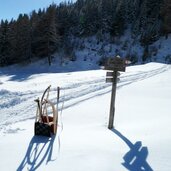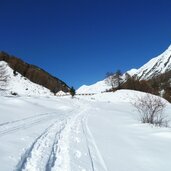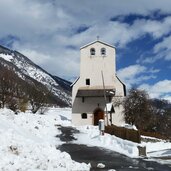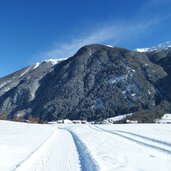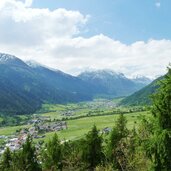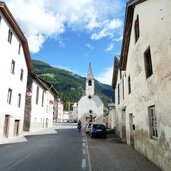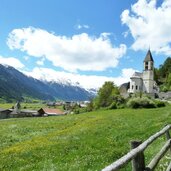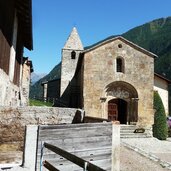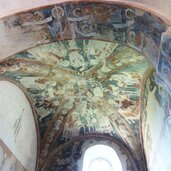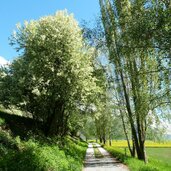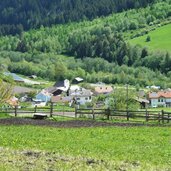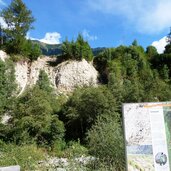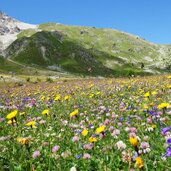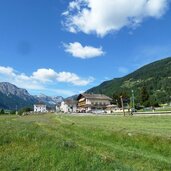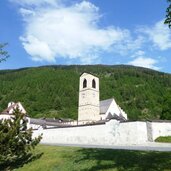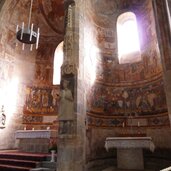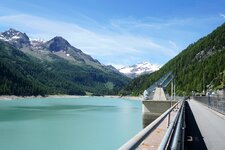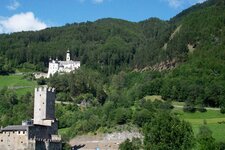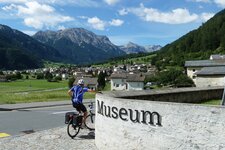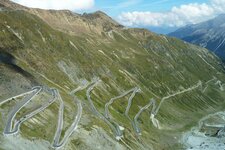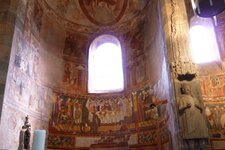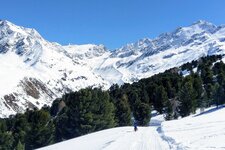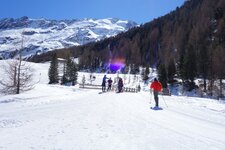The westernmost municipality in South Tyrol stretches along the Rio Ram between the Ortles Massif and the Swiss mountains
In the Upper Val Venosta, the Val Monastero (Münstertal) branches off, connecting the Val Venosta with the Swiss Canton of Grisons. The larger part of the valley lies on Swiss soil, where Romansh is spoken, while the South Tyrolean section is sparsely populated. The South Tyrolean Val Monastero essentially consists of this single municipality.
It extends from Rivaira up to the Sesvenna Alps, whose rugged cliffs reach heights of over 3,200 metres. Tubre, the main village of the municipality, is lined with old churches: St. John in Romanesque style, St. Michael in Gothic style, as well as the churches of St. Blaise, St. Martin, St. Anthony, St. Nicholas, St. Roch, and St. Valentine, bear witness to past centuries.
Between them, the Rotund and Reichenberg castle ruins can be discovered. From the 12th century onwards, these served as residences for the Bishops of Chur. The municipality of Tubre also includes the aforementioned Rivaira, the Tella hamlet, the Avinga Valley, and Pontevilla. The latter is a new settlement on the border, established during the First World War as a checkpoint with just a few buildings. Today, the farms are scattered across the green landscape of the Val Monastero.
The location of Tubre at the crossroads of Val Venosta and the Engadine, between Italy and Switzerland, creates interesting opportunities for activities: you can go on hikes and mountain tours in the area of the Piz Sesvenna, in the Avinga Valley, or up the Monte Cavallaccio.
The Hours' Trail is also popular, which until recently connected the Swiss Saint John Abbey in Müstair, a UNESCO World Heritage site, with the Benedictine Abbey of Monte Maria. By bike, you can conquer the Forno Pass or explore further parts of Italy via the Stelvio and the Umbrail Passes. In winter, you can go snowshoeing in the Avinga Valley, tobogganing, and cross-country skiing.



